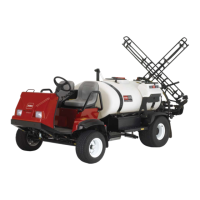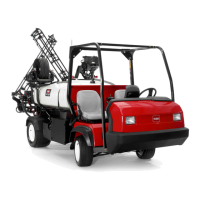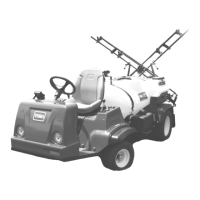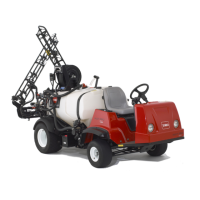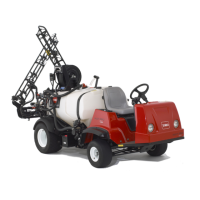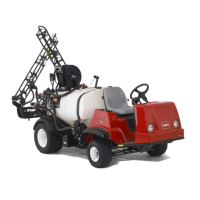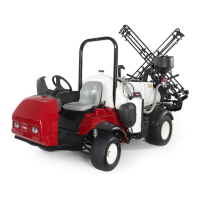Multi Pro 5800 Hydraulic SystemPage 5 − 89
1. Make sure the manifold is clean before removing a
fitting or cartridge valve.
2. If necessary, remove fittings and flow control orifices
from control manifold and discard O−rings (Fig. 65).
3. If cartridge is solenoid operated, remove nut secur-
ing solenoid to the cartridge valve. Carefully slide sole-
noid off the valve.
IMPORTANT: Use care when removing cartridge
valves. Slight bending or distortion of the stem tube
can cause binding and malfunction. Make sure that
deep well socket fully engages the valve base.
4. Remove cartridge valve with a deep well socket.
Note correct location for O−rings, sealing rings and
backup rings on valve. Remove and discard seal kit.
5. Visually inspect the port in the manifold for damage
to the sealing surfaces, damaged threads or contamina-
tion.
6. Visually inspect cartridge valve for damaged sealing
surfaces and contamination.
A. Contamination may cause valves to stick or hang
up. Contamination can become lodged in small valve
orifices or seal areas causing malfunction.
B. If valve sealing surfaces appear pitted or dam-
aged, the hydraulic system may be overheating or
there may be water in the system.
CAUTION
Use eye protection such as goggles when using
compressed air.
7. Clean cartridge valve using clean mineral spirits.
Submerge valve in clean mineral spirits to flush out con-
tamination. Particles as fine as talcum powder can affect
the operation of high pressure hydraulic valves. If car-
tridge design allows, use a wood or plastic probe to push
the internal spool in and out 20 to 30 times to flush out
contamination. Be extremely careful to not damage car-
tridge. Use compressed air for cleaning.
8. Install the cartridge valve:
A. Lubricate new seal kit components with clean hy-
draulic oil and install on valve. The O−rings, sealing
rings and backup rings must be arranged properly on
the cartridge valve for proper operation and sealing.
1. Boom lift manifold
2. Straight fitting (2)
3. Straight fitting (4)
4. Orifice − 0.035 (4)
5. Test fitting
Figure 65
20 to 26 ft−lb
(27 to 35 N−m)
20 to 26 ft−lb
(27 to 35 N−m)
1
2
3
4
3
4
5
IMPORTANT: Use care when installing cartridge
valves. Slight bending or distortion of the stem
tube can cause binding and malfunction. Make
sure that deep well socket fully engages the
valve base.
B. Lubricate threads of cartridge valve with clean
hydraulic oil. Thread cartridge valve carefully into
manifold port. The valve should go in easily without
binding.
C. Torque cartridge valve using a deep well socket
to value identified in manifold illustration.
D. If cartridge is solenoid operated, carefully install
solenoid coil to the cartridge valve. Tighten nut to 60
in−lb (7 N−m). Do not over−tighten nut.
9. If problems still exist, remove valve and clean again
or replace valve.
IMPORTANT: If fitting and flow control orifice were
removed from manifold ports C1, C2, C3 or C4, place
orifice with slot toward the bottom of the port mak-
ing sure that the orifice is flat in the base of the port
before installing fitting. Manifold damage is pos-
sible if the orifice is cocked in the port.
10.If fittings were removed from control manifold, lubri-
cate and place new O−rings onto fittings. Install fittings
into control manifold port openings. Tighten fittings to
specified torque (Fig. 65).
Hydraulic
System

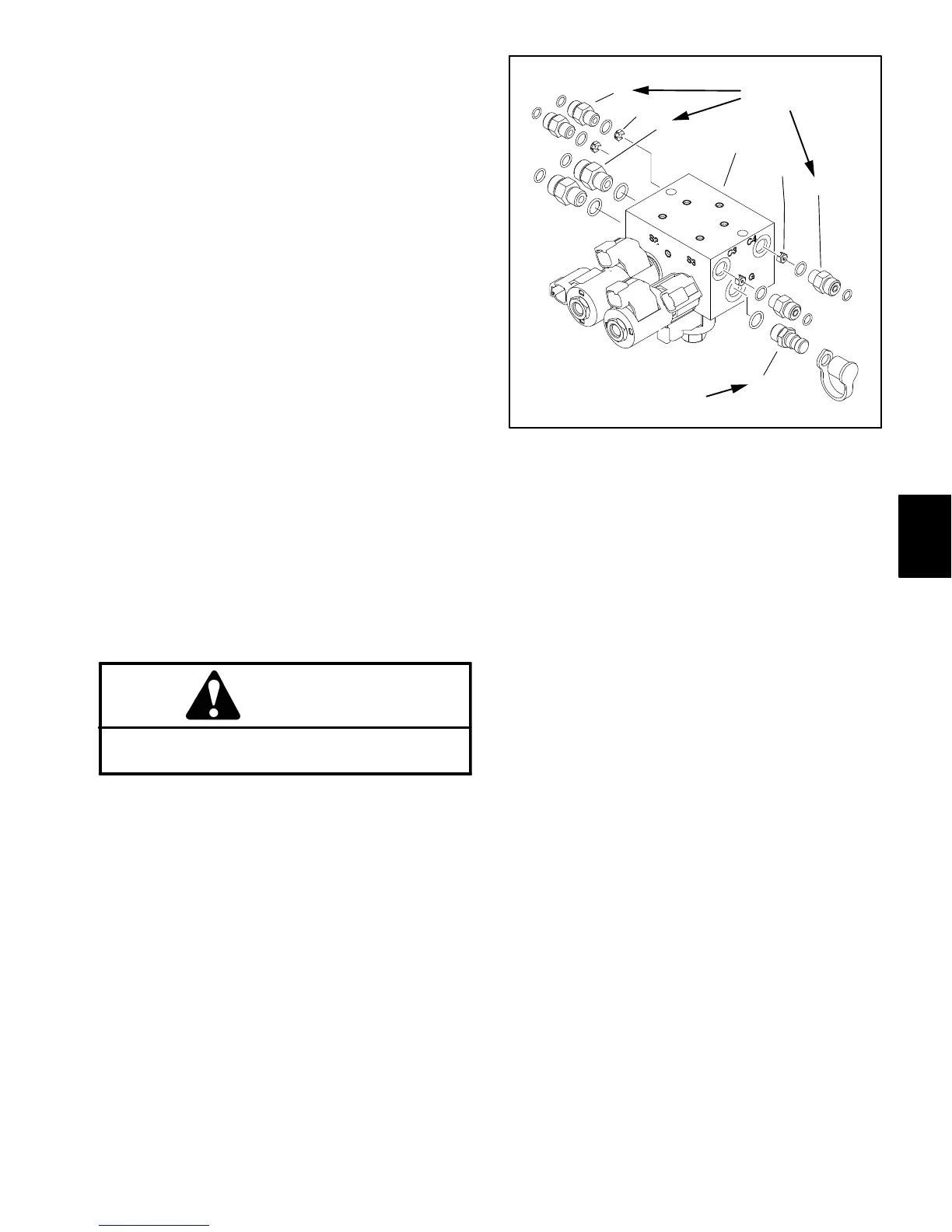